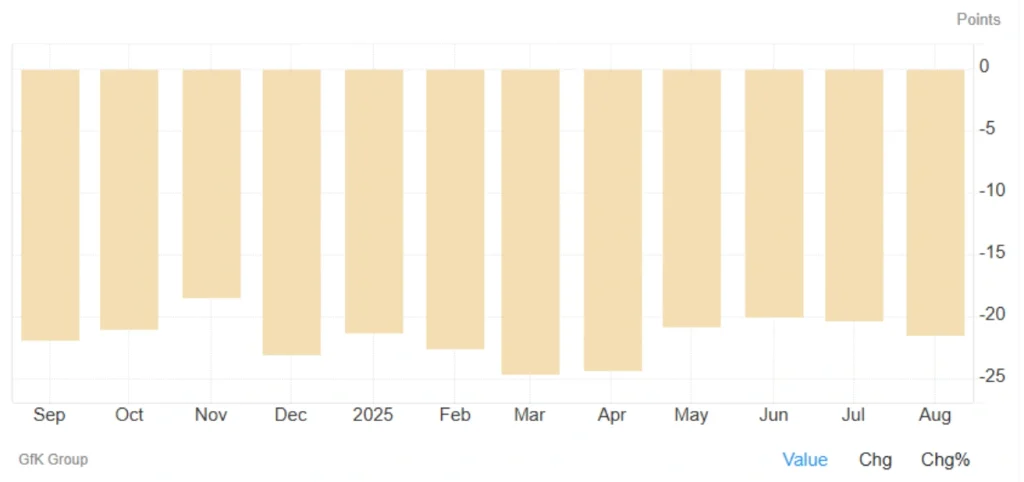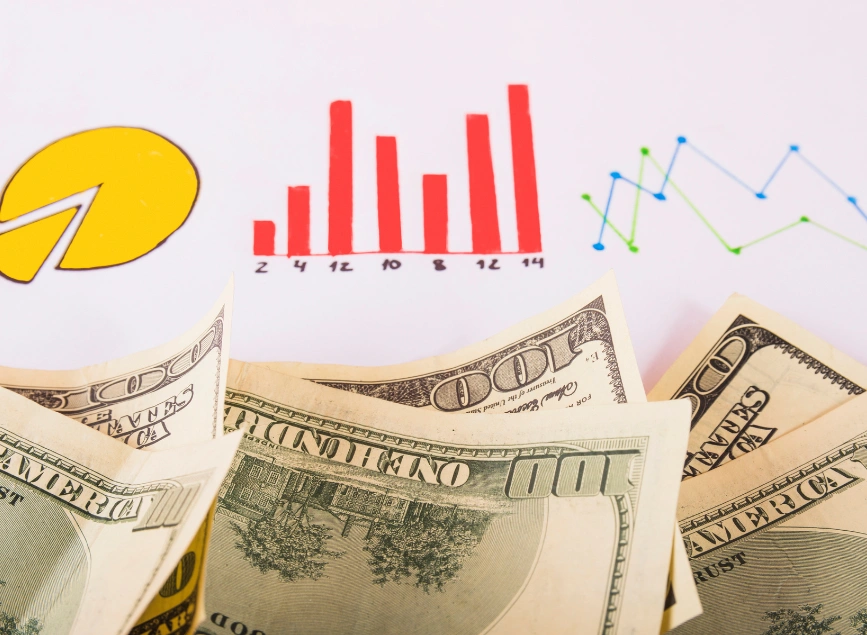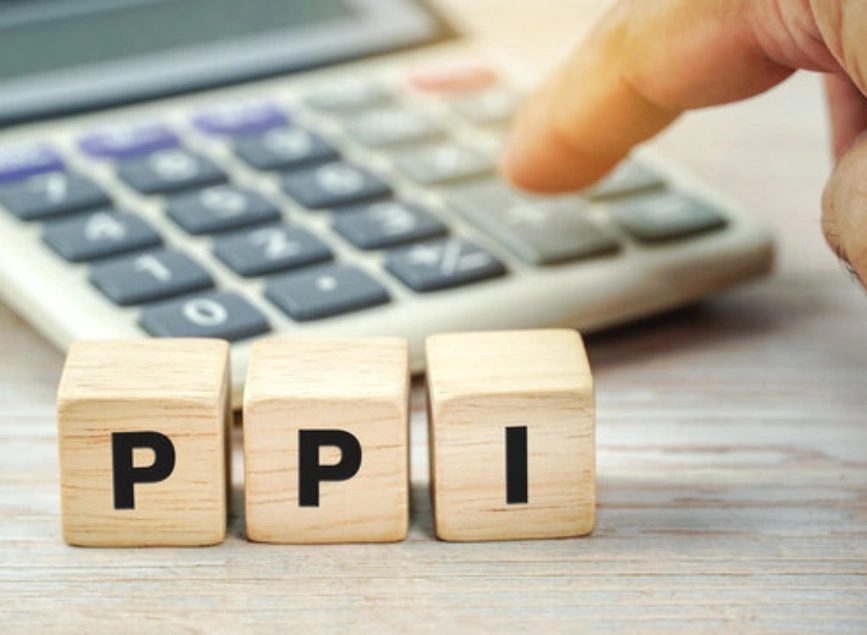
Germany Consumer Climate Slumps to −21.5 in August Amid Tariff Anxiety
📌 Key Takeaways
- Germany’s GfK consumer climate slid to −21.5, lowest since April
- Consumer sentiment missed forecasts (expected –19.2)
- Saving propensity rose to 16.4%, highest since Feb 2024
- Willingness to buy dropped further to –9.2
- Economic expectations fell sharply from 20.1 to 10.1
- Income expectations improved, rising to a one-year high of 15.2
📊 Key Data at a Glance
| Indicator | August 2025 | July 2025 |
|---|---|---|
| GfK Consumer Climate | −21.5 | −20.3 |
| Forecast | −19.2 | — |
| Saving Propensity | 16.4% | 13.9% |
| Willingness to Buy | −9.2 | −6.2 |
| Economic Expectations | 10.1 | 20.1 |
| Income Expectations | 15.2 | 12.8 |
Shift in Consumer Mood: Germany Consumer Climate Slides
Germany’s consumer climate indicator, a key measure of public sentiment, fell from –20.3 to –21.5 for August 2025, missing the consensus estimate of –19.2. This marks the lowest reading since April and reflects deepening pessimism among German households.
🧾 Why It Matters
The reading signals consumers are tightening belts amid economic uncertainty, heavily influenced by global trade tensions, notably U.S. tariffs on European goods. This climate can impact spending and slow economic growth.

💰 Households Save More and Spend Less
The drop in Germany’s consumer climate stems largely from rising caution:
- Saving Propensity: Climbed 2.5 points to 16.4%, the highest since February 2024
- Willingness to Buy: Slipped further into negative territory at –9.2
NIM expert Rolf Buerkl noted:
“The recovery in consumer sentiment continues to be postponed, because the willingness to save has risen again.”
Consumers are clearly preparing for possible financial stress rather than spending.
📉 Expectations for Economy Hit Hard
Economic expectations plunged by 10 points, from 20.1 to 10.1, ending a five-month run of positive sentiment. This decline highlights growing concern over tariff impacts, supply chain disruption, and inflation.
In contrast, income expectations improved, rising to 15.2, the highest in a year—thanks to firm wage agreements and a slight easing in inflation.
Read More: Surprise Rebound in German Factory Orders in April 2025
🚦 Headline vs. Sub-Indicators
- Consumer sentiment: Declining
- Spending appetite: Decreasing
- Savings: Increasing
- Wage outlook: Improving slightly
🏁 What It All Means
The weakening Germany consumer climate suggests the Eurozone’s largest economy may face sluggish consumer spending into late 2025. More cautious households, paired with tariff anxiety, could pose a challenge for GDP growth and the European Central Bank’s inflation-targeting efforts.
🛑 Watch Points Ahead:
- Developments in U.S.–EU trade relations
- Inflation trends and wage adjustments
- Eurozone economic data releases
Have you felt the shift in Germany’s consumer mood? Drop a comment below with your predictions or share this insight with friends watching the Eurozone economy!
Share
Hot topics

What Is Forex Fundamental Analysis?
Forex trading can seem confusing from the outside. Charts move quickly, prices change every second, and traders talk about pips (the smallest unit of price movement), spreads (the difference between...
Read more




Submit comment
Your email address will not be published. Required fields are marked *